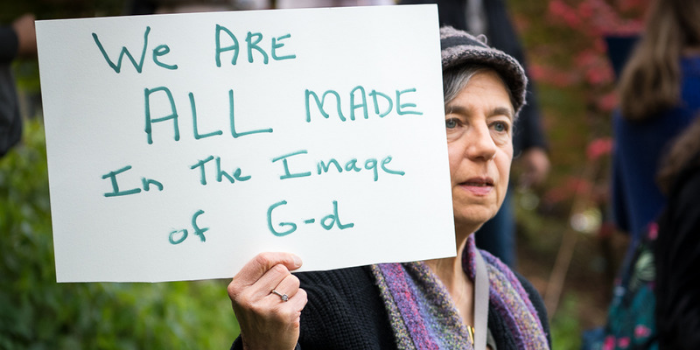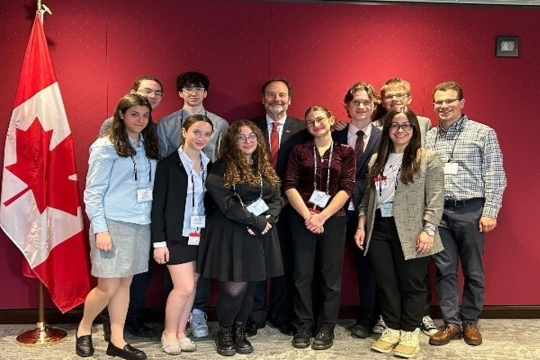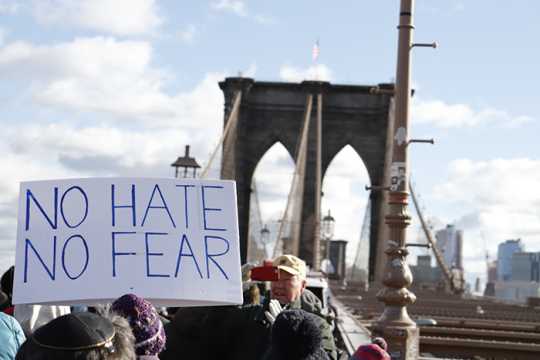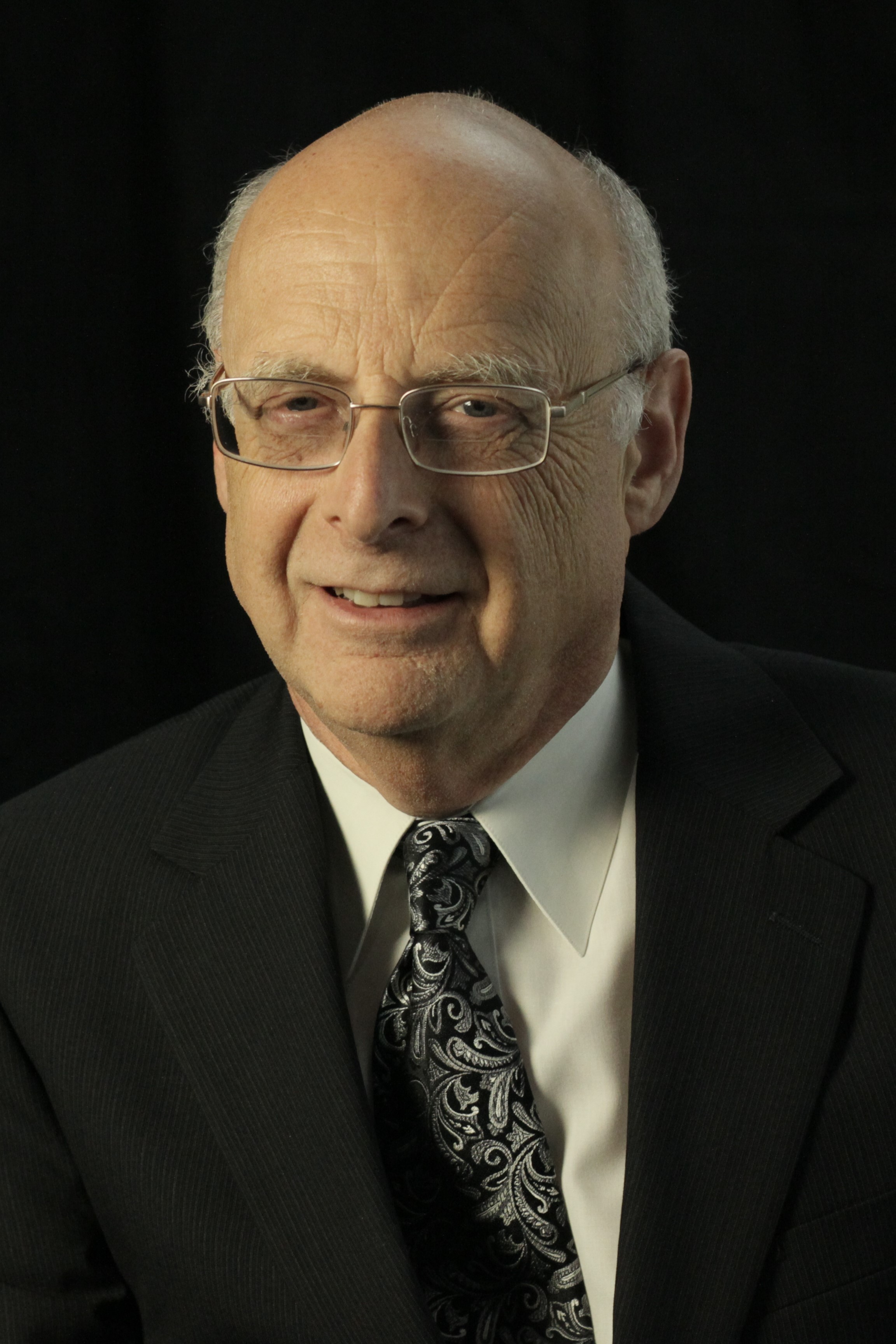
This article was originally published on jewishjournal.com.
Tisha b’Av is a frame of reference, recalling moments of Jewish destruction and despair. There are rhythms to those seasons in which we mourn our collective as well as personal losses. The feeling tones of how we confront life and death were introduced in both our liturgy and Jewish texts. Our rabbis provided us with a language to mourn as well as to reflect.
Just as these days set aside in the Jewish calendar allow us to mourn, they also remind us of the possibilities for creativity and reinvention. While civilizations need to account for those dark chapters, societies also must extract creative moments that have redefined their stories from their historical journeys. During these hours of fasting, a minority community can ill afford to exclusively focus on its vulnerabilities, as it must constantly address its present and future state, and its ability to rise above its fears and losses to again become actors in history.
With the destruction at hand of the Temple in Jerusalem, Rabbi Yochanan ben Zakkai saw an opportunity to preserve Judaism and sustain the Jewish people. As a community, we recalibrated our condition. Our leaders, our heroes, would reframe the messaging, as they would reconstitute the institutions essential for Jewish continuity.
We live in context, as we see the elements that define our environment constantly changing. We have learned from our historical journeys that the relationships we establish — internal to our community but also across religious and political lines — are critical to our welfare as a people.
In the case of the destruction of the Jewish Commonwealth in 70 C.E., Flavius Josephus, the one eyewitness commentator, reminds us that the central story revolves not around the Romans and their efforts to impede Jewish religious practice, but rather among the war the Jews, the zealots’ victory against the other Jerusalemite factions. The outcome here is not a call for Jewish unity; it is a commentary that rests on ceding power to those unconcerned about the political consequences of their actions.
Any imbalance in the political equation can undermine a community’s well-being. The internal wars of the Jews during Temple times illustrate this, as did a changing alignment within the Spanish imperial court in the 15th century. Each event produced negative outcomes for the Jewish people, resulting in the Temple’s destruction in the first instance and the end of the Golden Age for Jews after the Inquisition of Catholic Spain.
While each dark event in Jewish history contains some shared features, we must see each tragedy as unique, with distinctive features and providing us with opportunities to learn.
Just as leaders change, so do the cultural tapestries that frame a nation’s values and rhythms. This is what we observed in Germany in 1933, when a new political identity reshaped the German state as Nazism took hold over the apparatus of governance. Currently, a set of changing demographic realities and cultural norms in Europe confronts us, and as this has unfolded, the statuses and well-being of Europe’s Jewish communities continue to decline.
What have we learned from this? Societies are not static and, as such, memory often becomes distorted, if not forgotten. Over time, the meaning of what has happened to Jews takes on new and different import. New generations remake meaning from earlier moments in time, often transporting these past events into their current political frames of reference; for example, our enemies are attempting to reframe the Holocaust, first by denying our legacy, then by labeling us as the “new Nazis.”
Even in the United States, we are living through a complex and potentially dangerous moment. In the past, Jews faced isolated attacks; in this current context, for the first time in our nation’s history, Jewish Americans are experiencing threats to their status from both the political right and the political left. When Jews are subjects of the political debate rather than being identified as civic partners, this introduces a new level of discomfort and requires different types of political and moral responses.
This is unsettling for many of us. Words both spoken and unspoken are troubling. As we clearly recall Charlottesville, Pittsburgh and Poway, we are shocked by how quickly societies can shift from an environment of mutual respect and civility to a place of violence and hate. The new ugliness that has entered the American consciousness does not define or fit the character of this great nation.
As part of this redefinition of Americanism, our enemies seek to alter our status, question our loyalty and undermine our political interests. Some accuse us of trying to “replace” or imitate white Anglo-Saxon Protestants (WASPs) as the new power group. These new negative images represent elements of the contemporary assault on Jewish Americans and other constituencies within this nation.
In the end, however, these attacks on Jews and Jewish institutions are about a larger question: What type of American ethos and culture will emerge in the decades ahead? This dual-edged war questions the status and place of America’s Jews, just as it permits others the opportunity to marginalize Israel and its legitimacy as a Jewish state. For the political right, this is the first salvo in its war against multiculturalism and diversity.
By seeking to question the “whiteness” of Jewish Americans, the so-called “alt-right” and its allies also seek to minimize other “nonwhite” forces that “occupy” space in this society. Speaking about an American homeland, the alt-right defines this idea as white-only, which, in the case of Jews, means we are not welcome at the table.
“They (Jews) have their own identity, and it isn’t white-slash-European,” writes Greg Johnson, editor-in-chief of a white-nationalist publishing house. He further states, “I oppose the Jewish diaspora in the United States and other white societies. I would like to see the white peoples of the world break the power of the Jewish diaspora and send the Jews to Israel, where they will have to learn how to be a normal nation.”
However, the war against the Jews and Israel is not limited to the political right. Examine specific elements from the political left, including the “progressive wing” of the Democratic Party, the women’s movement, the boycott, divestement and sanctions (BDS) campaign and the Black Lives Matter movement. Each of these voices carries its specific grievances against the Jewish state, and in some cases, against American Jewry. For elements within these circles, “Jewish whiteness” and our Zionist credentials are seen as both problematic characteristics and disqualifying issues. Here, the perceived Jewish political relationship to the Trump administration and the close connections between President Donald Trump and Israeli Prime Minister Benjamin Netanyahu serve as the backdrop in defining Jews today as “white,” or being identified as part of the entrenched power-class — therefore, we no longer qualify as being legitimate political outsiders or petitioners.
For our enemies on the right, this development threatens their definition of a “white” America. As political “impostors,” they see us as operating in a territorial space reserved for others, so our historical claims of victimhood hold little credibility in the marketplace of ideas. On the political left, we are seen as “powerful” and “influential”; as a result, we are “frauds” in our strivings to be present and active in challenging the status quo, just as we are losing credibility as a minority culture.
Within recent months, reports of hate crimes, physical attacks, anti-Semitic threats and negative political messaging have increased. Our enemies, both left and right, have taken the opportunity to advance specific anti-Jewish commentaries or repeat worn-out mantras against the State of Israel. This new war on American Jews and Israel reflects the hidden — and not so hidden — hatred present within this society. Now unleashed, our community is experiencing assaults on individual Jews, Jewish institutions and high-profile symbols of Judaism and Israel. But such violence and anger goes well beyond Jews, striking Muslims, Latinos, Asians and blacks, as well.
Modern anti-Semitism incorporates previous forms of anti-Jewish behavior while employing distinctive new elements. Contemporary anti-Semitism reintroduces the issue of “race” and “nationality” as Jews are challenged about their “whiteness” and their legitimacy as Americans. Drawing upon Hitler’s use of race, the assault today on America’s Jews seeks to employ a similar type of profiling.
Social media carries much of the contemporary hate. An element of this new war against the Jews is designed to target specific, high-profile Jews. The new hate uses conspiracy ideas concerning Jewish behaviors and actions — a technique borrowed from earlier periods of anti-Semitic rhetoric. In this current framework of hate messaging, Israel has become one of the centerpieces in this assault.
What is contributing to the acceleration of these anti-Semitic attacks? American mainstream culture and politics have given space for these expressions of public hate. Social media has permitted “alternative facts” to replace truth, just as it has given rise to “fake news.” In the past, society would see such overt lies and hostile statements as outside the boundaries of acceptable behavior or accountable public speech.
According to Anti-Defamation League National Director and CEO Jonathan Greenblatt, we appear to be entering a period where we are witnessing a new normalization of anti-Semitism. The information revolution has altered both how and what is conveyed to audiences. New understandings of “truth” and “facts” have altered and disrupted the flow of ideas. Historical facts have given way to new mythologies about Jews, Judaism and the State of Israel.
In her book “Antisemitism: Here and Now,” author Deborah Lipstadt wrote: “A healthy democratic society cannot tolerate anti-Semitism and racism. If that is festering in its midst, it says something is unhealthy about the society. It’s not just Jews for whom this is dangerous. This should terrify you. Because if this is happening to Jews, it may start with the Jews, but it doesn’t end with the Jews.”
The politics of hate, as with any political device, employs such tools as a framework for retaining power or for intimidation; hate distracts a crowd from its own condition. By directing people to see a third party as an escape valve for their frustrations, leaders deflect a crowd’s anger or disappointment away from the political establishment onto one or more minority communities.
Tisha b’Av reminds us that as Jews, we have experienced such hate politics in various cultures and in different time frames. A poet reminds us that our loss and suffering in some measure remain embedded within us:
Ancestors’ sobs echo through winding old city streets
Then settle here, to mingle in my modern ears,
Over thousands of years, over thousands of miles.
The breaking of ancient hearts reflected by cracks in mine.
A community such as ours can ill afford to forget its pain. This moment awakens us to anticipate the sounds of the shofar. In this hour of our reflections and at a time that beckons us to remind ourselves of the sacred mission and prophetic intentions of Judaism, we recall the words of Abraham Joshua Heschel, challenging us to see our role as being “God’s stake in human history.”
As a community, we come to this moment experiencing a different place in our journey. Jews must learn to live with changing political realities, as we no longer are victims of history but a community that has attained a degree of power reflected in Jewish national sovereignty, but also identified by our status as Jewish Americans. This is a new place and time for us. In periods of heightened political tension, how a society interacts with its minorities serves as measure of that nation’s cultural resiliency, political openness and social transparency. We need to exercise our influence, both in pushing back against our enemies and in manifesting our political interests as we become the voice of the voiceless.
In light of the onslaught of public violence in the name of white supremacy, including most recently El Paso, Texas, our own historical journey may well serve as a reminder to others of the consequences of hate when directed against a specific community. Our tradition calls upon us not to remain silent in the midst of evil. We are compelled to reach across class, race and ethnicity in affirming what as a nation we collectively represent.
In his powerful contemporary reflection on Tisha b’Av, Aryeh Cohen shared his insights:
Is this the fast that I would choose — a day in which people hunger for bread?
Is this not the fast I would choose — a day on which we rise to righteousness.
A day of opening the fetters of wickedness,
A day of sending the oppressed free,
A day of recognizing the humanity of people,
Thus we will redeem our places, and The Place blessed is s/he
For the thing is very close to us, it is in our mouths and in our hearts, to do it
In embracing the new and troubling political realities in our midst, let us resolve to be the seekers of truth, the messengers of meaning and the actors of justice supporting our own community as we embrace a humanity struggling to recapture its moral compass.
Related Posts

Inside the Inaugural L'Taken Canada

Five Definitions of Antisemitism

